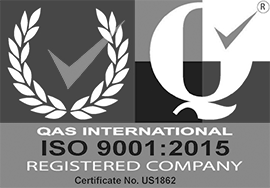There are many ways of producing metal fabricated parts, with die casting and forging being two of the most common methods. While each of these methods offers numerous benefits, it is important to understand exactly what each method involves before choosing one or the other for a project.
Die Casting vs. Forging Processes
In this section, we will examine the die casting and forging processes before taking a closer look at the benefits and potential drawbacks of each.
What Is Die Casting?
In die casting, metal is heated until it becomes a molten liquid, which is then poured into a die with a cavity in the shape of the part to be produced. Once the die cavity has been filled, the metal cools and resolidifies, at which point the die is separated and the completed part extracted. Die casting is suitable for a broad range of metal materials, including aluminum and zinc alloys.
What Is Forging?
In metal forging, a solid piece of metal is formed into the desired shape or geometry through a combination of temperature (cold, warm or hot), compression and mechanical force.
In practice, this typically means that the solid raw material is compressed with a die or a series of dies into the shape needed, with percussive or mechanical force incorporated as necessary. The origins of forging lie in the centuries-old practice of blacksmiths with a hammer and anvil, although forging today is typically more automated using dies.
Pros and Cons of Die Cast vs. Forged Metal Parts
The die casting and forging processes each have numerous unique qualities that make them suited for some metal fabrication applications, but not others. Here, we will explore the pros and cons of each.
Pros and Cons of Die Casting
Pros
- A versatile process suited for a wide range of materials, including zinc and aluminum alloys
- Suitable for more complex geometries
- Larger, heavier parts can be cast as easily as smaller ones
- Tooling is generally less costly
- Often requires little to no secondary or finishing processes — parts are produced accurately through die casting
Cons
- May exhibit comparatively lower part strength due to broken grain flow in the heating and cooling processes
- Certain metals with higher melting points are not ideal for casting
Pros and Cons of Forging
Pros
- Often exhibits higher material strength as grain flow remains intact in the forging process
- Suitable for metals with high melt points that are not conducive to casting
Cons
- Does not produce parts as accurately as casting
- Parts often require additional working or finishing
- Has a comparatively smaller material selection than casting
- Is generally more costly than die casting
- Not as suitable for large quantities
- Cannot efficiently produce parts with more complex geometries
With these factors in mind, you are now able to make a more informed decision between die casting and forging. While forging is suitable for certain types of metals, in general, die casting will offer greater versatility in material selection and design, while enabling low-cost, efficient production of high-quality parts in nearly any volume.
To learn more about our expertise and services, contact Soldy Manufacturing today.



